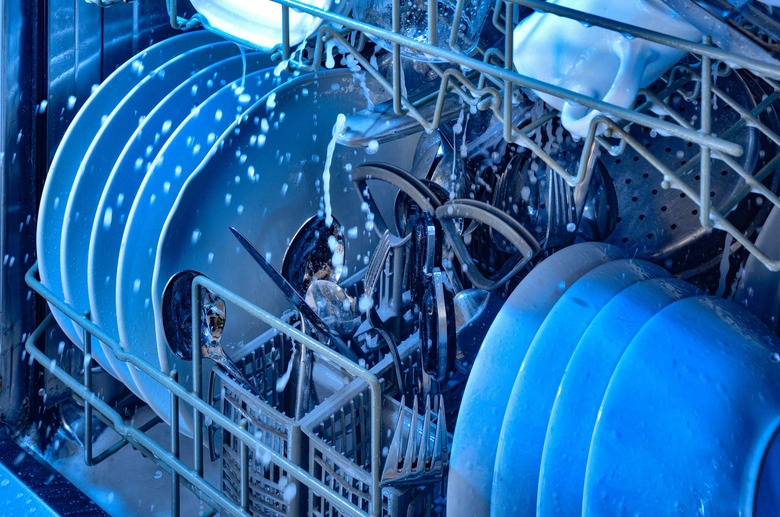Science Explains Why Plastic Containers Always Come Out Of The Dishwasher Wet
If you've ever unloaded a dishwasher and found everything sparkling dry, except for that one plastic container still clinging to a puddle of water, well, you're not alone. It's one of those everyday mysteries that feels like it shouldn't be so hard to solve. But as it turns out, there's some very real science behind why plastics don't dry as well as your plates and glasses.
It all comes down to two main things, researcher Kamil Zuber explained in a post submitted to The Conversation. Those two things are material properties and surface energy.
One key problem is that plastic simply doesn't retain heat as well as materials like ceramic or metal. Your dishwasher relies on heat to speed up evaporation in the drying cycle, but since plastics stay cooler, the water on them lingers longer. That's a big reason why plastics don't dry as quickly—even if everything else comes out bone dry.

But there's another factor that helps explain why plastics don't dry as well, and that is surface energy. Plastics tend to be hydrophobic, which means they repel water. Instead of water spreading out into a thin layer that can easily evaporate, it beads up into droplets. These droplets sit there stubbornly, waiting for either time or a towel.
Ceramics and metals, on the other hand, are usually more hydrophilic. Water spreads out on them, forming thin films that evaporate more quickly. That's why your mugs and saucepans are usually dry and ready to stack while your Tupperware is holding a tiny indoor pool.
Dishwasher detergents do help, particularly during the main wash cycle, as they contain surfactants, which reduce water's surface tension and help it spread more easily. And if you're using a rinse aid, you're already taking an extra step toward better drying. Rinse aids make water slide off plastics more effectively by tweaking surface tension even further.
Still, no drying method is perfect for plastic. The best trick, Zuber says, is to open the dishwasher door when the cycle ends. Letting that steam escape helps avoid condensation that just re-wets everything. It won't magically dry your plastic containers, but it can make a big difference.
So the next time you're staring at a soggy lid while your plates are dry as the desert, know it's not just your dishwasher's drying cycle slacking off. It's pure, stubborn science. Maybe one day, they'll make plastic that can hold its heat like self-heating fabric. Or, we'll just all abandon it and curb our growing plastic waste problem once and for all.
